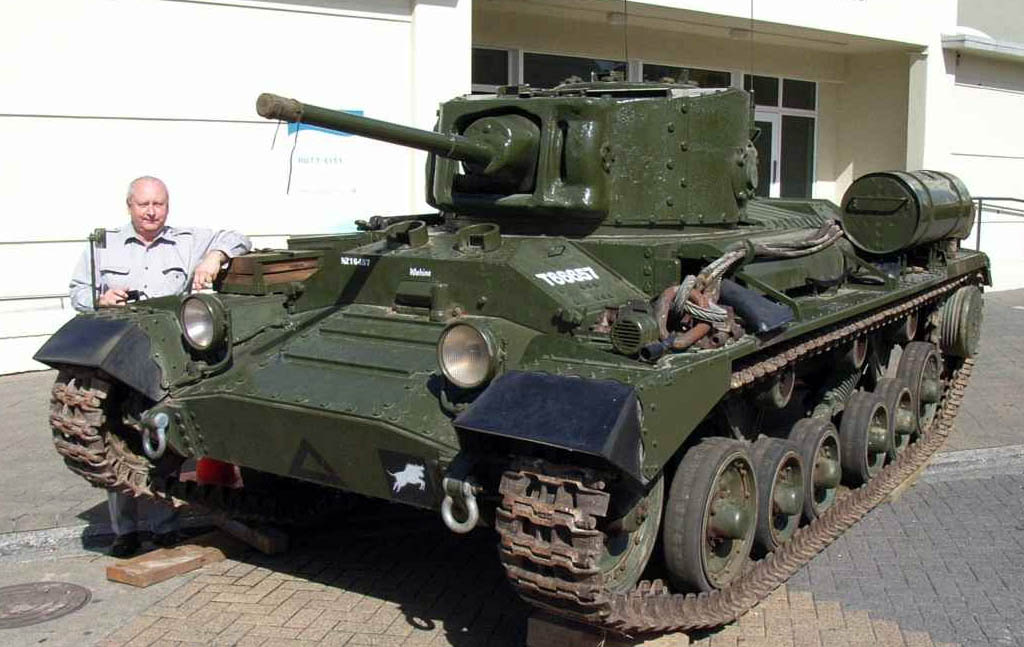
|
A Valentine tank - Date/photographer unknown.
|
|
A Valentine tank body under construction at Canadian Pacific's Angus Shops in Montreal -
Date/photographer unknown.
|
|
Lifting a Valentine tank body at CPR's Angus Shops in Montreal - Date/photographer unknown.
|
|
A wartime painting depicts the attachment of a tread to a Valentine tank at Angus Shops in Montreal - Date/artist
unknown.
|
|
Steam locomotive bells and the Valentine tank assembly line at Angus Shops in Montreal - Date/photographer
unknown.
|
|
A group of 28 ton Valentine tanks, almost completely assembled, at Angus Shops. A workforce of 3,500 produces the
tanks, each of which is composed of 40,000 parts, and costs $90,000. The tanks have a top speed of 25 mph - Date/photographer unknown.
|
|
During WW II, Angus Shops in Montreal produced 1,400 Valentine tanks for shipment to Russia to assist in their drive
to force the German Army out of eastern Europe - 1941-1943 Canadian Pacific Archives NS3004.
|
|
Valentine tanks rest on flatcars awaiting shipment to Russia - Date/photographer unknown.
|
|
Brigadier Kenneth Stuart, D.S.O., M.C., stands in the first Canadian-built Valentine tank at Angus Shops -
27 May 1941 Photographer unknown.
|
|
The Valentine tank was submitted for approval to the British War Office on 14 Feb 1938, hence the name Valentine. The
first ones were ordered from Vickers of Britain in July 1939. They were originally called Infantry Tank MK III and reached service in May 1940,
with production finally ending in early 1944. They served in North Africa, Madagascar, Burma, and the Pacific Campaign, plus Russia too. The
Soviets used 1,300 Valentines on the Eastern Front. 8,275 were built in Britain and a further 1,420 in Canada.
The Valentine used 6 road wheels on each side, in two 3-wheeled bogie units. The turret varied between the different models, with early models
having a 2-man turret and the later ones a 3-man version, but it was always cramped. The main armament was the normal 2-pounder, but this
progressed to a 6-pounder and a 75mm. The Soviets replaced the 2-pounder with a 76mm gun, which made the turret even more cramped.
When its role as a tank was over many were re-used, firstly as the basis for the Bishop Self-Propelled Gun, with a 25-pounder mounted on a
large "box" on top and later as the Archer Self-Propelled 17-pounder anti-tank gun. Some were also used as the basis of bridge-layers,
flame-throwers, and swimming tanks.
|